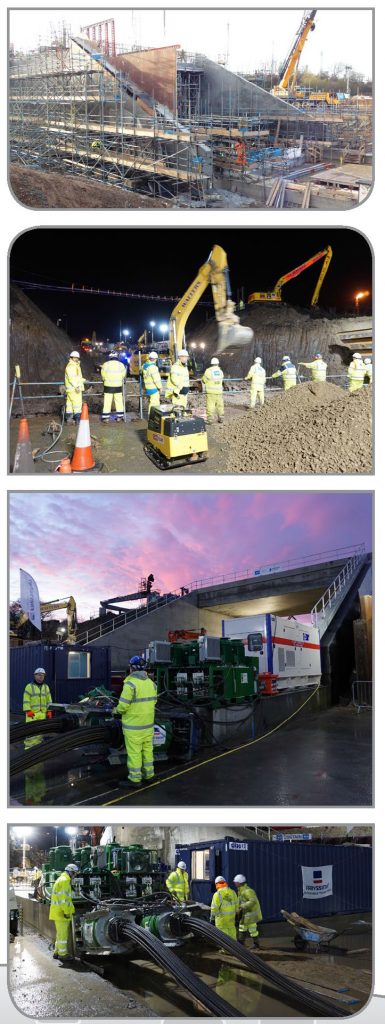 A160/A180 Port of Immingham Improvements – Autofoncage® Structure Slide
A160/A180 Port of Immingham Improvements – Autofoncage® Structure Slide
Client
Highways Agency
Principal Contractor
Costain Construction
Engineer
Jacobs
Works Commenced
August 2015 (Guide raft)
December 2015 (Slide)
Highways England’s major improvement scheme on the A160/A180 Port of Immingham in North East Lincolnshire aims to enhance road access into the port, as well as stimulating growth and unlocking economic benefits in the area. The £88 million improvement plans included a new route to be built under the Immingham to Ulceby railway line, which is one of the busiest stretches in the UK.
In order to keep disruption to a minimum, Highways Agency agreed with Network Rail to build the underpass next to the tracks and then slide it into position during a blockade on Christmas Day 2015.
Freyssinet was appointed by Principal Contractor Costain to undertake the structure slide of a reinforced concrete bridge box, measuring 39x18x11m high and weighing approximately 3750 tonnes, beneath the railway line.
Freyssinet’s Autofoncage® sliding method was selected for the works, which consists of the concrete box was being ‘floated’ on a bed of bentonite (modified liquid clay) while horizontal cables pull the structure into place. The cable arrangement means that all preparation can be done prior to the blockade, minimising any additional disruption.
In the months leading up to the slide, a guide raft – a 250mm thick slab of similar plan size to the box was constructed next to the railway line. The raft would act as the reaction point for launching the box and mobilise soil resistance with help from an end reaction wall. The concrete box was then constructed on top of the raft, and the interface between them greased and covered in plastic sheeting, which became the sliding surface on launch day.
When the stressing jacks were attached and the cable shortened by the stressing process, the rear of the box was ‘catapulted’ towards the railway. The structure was sized and positioned so that when the active ends of the cables reached the passive ends nearest to the railway, the box would be in position.
Ten days before the slide, Freyssinet commenced installation of the four 1000 tonne jacks and associated hydraulic equipment needed to move the structure. The system was tested 48 hours before the main slide, by moving the structure 450mm towards the railway embankment.
The railway line was temporarily closed at 22:00 on Christmas Eve when the rails were removed, followed by the excavation of 20,000 tonnes of earth from the embankment. The slide commenced at 21:00 on Christmas Day and finished at 08:45 on Boxing Day. This was one hour quicker than programmed, the 41 metre slide taking 11 hours and 45 minutes, an average speed of 3.4 metres per hour.
The bridge was successful positioned within 50mm of notional intended position and the backfilling and rail reinstatement completed. The possession was handed back to Network Rail at 03:35 on 28 December, within the timescales agreed with the blockade team.
